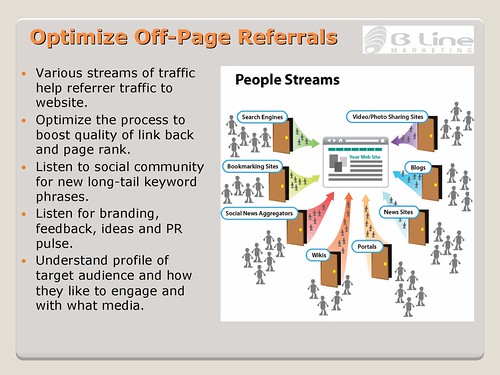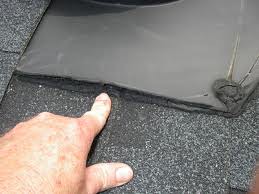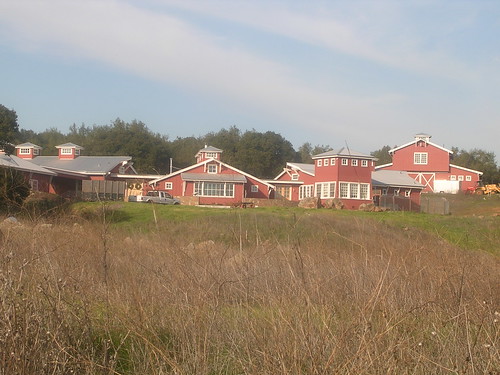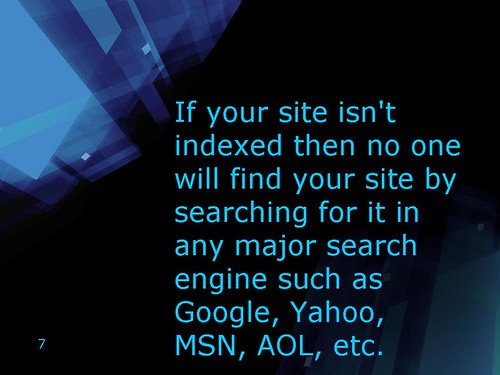Fewer than 1 percent of website visits come directly from a social media URL according to research just released by customer satisfaction analytics experts ForeSee Results.
The company surveyed 300,000 consumers on more than 180 websites across a dozen private and public sector industries. The referring social media sites covered were not just the usual suspects like Facebook and Twitter, but over 40 sites including Flickr, Foursquare, Scribd, Stumbleupon, Meetup and Youtube.
It’s not all bad news for social media marketeers. 18 percent of site visitors (averaged across surveyed websites) report being influenced by social media to visit a website. However, there was considerable variation in the results for different companies.
The social media budgets of marketers is constantly increasing as the survey data to the right shows. Forsee Results’ research showed that the resources companies put into social media and the results they receive vary wildly. Spending more money does not automatically lead to higher numbers of visits to websites, brand awareness or sales.
Promotional emails are also sometimes neglected in favor of the more glamorous social media, in spite of the fact that such emails influence 32 percent of purchases.
Companies themselves seem a bit confused about their objectives when it comes to social media. Internet Retailer Magazine surveyed 400 U.S. companies (19 percent of them retailers) in December 2009 and January 2010. It found that 74 percent of companies wanted social media to drive traffic to their websites, while only 56 percent wanted it to increase sales. Shouldn’t it be the other way around?
Next Story: Why mobile app success is more than just download numbers Previous Story: Battle brewing at Microsoft over retail store expansion
There has been a lot of talk as to whether or not social media is the front runner in another inflated internet bubble waiting to burst, leaving users “virtually” friendless and clueless. Will everyone be out of the loop, with no one keeping track of daily deals, happenings or status updates? Warren Buffet confirmed this fear stating that although it’s not as big as the dot com bubble, social media is not long term by any means. However, industry trends and buyer behaviors are stating otherwise.
Facebook has proven beneficial to marketing efforts for B2C companies, but B2B marketing has struggled to find its footing on the platform. That’s where LinkedIn has emerged as the go-to medium for B2B marketers.
A recent study done by BtoB Magazine, showed that when asked “Which of the following social media methods does your company currently use for your B2B marketing (i.e. not personal use)” 72% of B2B marketers said LinkedIn. After reaching more than 100 million users, LinkedIn has solidified its niche as Facebook in a business suit, and B2B companies have taken notice.
The 2011 State of Inbound Marketing (an annual report done by HubSpot, an inbound marketing software company) found that 61% of B2B marketers who participated in the survey acquired a customer through LinkedIn. The targeted and measurable aspect of inbound marketing is what makes it so attractive to smart business owners who are tired of spending money on marketing with no proof that it’s working. Former Chief Marketing Officer of McDonald’s, M. Lawrence Light said, “It no longer makes economic sense to send an advertising message to the many, in hopes of persuading the few.”
Continued on the next page
bench craft company
 Sprint Cup driver Greg Biffle has finalized a new contract with Roush Fenway Racing and primary sponsor 3M, multiple sources told ESPN.com.
Sprint Cup driver Greg Biffle has finalized a new contract with Roush Fenway Racing and primary sponsor 3M, multiple sources told ESPN.com.
bench craft companyAnthony is a senior editor at VentureBeat, as well as its reporter on media, advertising, and social networks. Before joining ...
bench craft companyRead our Wii news of Mario & Sonic at London Olympics sighted?.
bench craft companyWe’ve been hearing all kinds of Chatter that the next version of Final Cut Pro will debut in Vegas at NAB next week. Thing is, we hear this every year and Apple hasn’t really done a NAB properly in awhile. That’s OK, we’ll take that we can get.
Rumors are flying that Apple will be using the Vegas Supermeet to announce the next version of Final Cut Pro. Supposedly, Apple will be taking over the entire event for their announcement, cancelling all other sponsors, including AJA, Avid, Canon, BlackMagic, Autodesk and others, who were set to give presentations.
Philip Bloom just confirmed with me that Canon has canceled his appearance at the Supermeet. Canon was told last night that Apple has demanded ALL “lecturn” or stage time exclusively. Some sponsors who were not using presenters may continue to sponsor the Vegas event, but none of them will be presenting on the stage. I can’t imagine any news that would warrant this kind of “take-over” other than to announce and demonstrate the next full version of Final Cut Pro and possibly an entirely newly designed FCS4.
(UPDATE: Avid confirmed that Supermeet (Michael Horton) told them last night that their sponsorship had been cancelled. According to Avid, “Apple doesn’t want anyone to have stage time but them.”)
Who’s up for Vegas?
We heard the first concrete details about Apple’s all new Final Cut Pro coming during Spring this year, and recently some new information has come to light. Final Cut Studio expert Larry Jordan was one of the people at Apple’s meeting, demonstrating the upcoming upgrade to the professional film-making software.
Jordan can’t say much about the upgrade, due to an NDA with Apple, but he did say it is a “jaw-dropper.” Besides the “jaw-dropper” part, the thing we are taking most from his blog post is the fact that Apple allowed him to write it up. It appears that Apple already considers the software public knowledge. Afterall, Apple CEO Steve Jobs did tell a 9to5mac reader to buckle up for it.
Thanks to Charlie Sanchez
- Next Final Cut Pro is a “jawdropper,” Apple considers it public knowledge, and will it drop at NAB? (9to5mac.com)
- Apple says last Xserve orders shipping in April, here’s what’s next for XSAN (9to5mac.com)
- Nasdaq to cut Apple’s weighting in rebalancing (9to5mac.com)
- Feeling the heat, HP and Dell execs lash out at Apple, pray iPad will fail (9to5mac.com)
- Certain MacBook Pro models ‘unavailable’ for reservation at many Apple Stores (9to5mac.com)
- Apple asks Toyota to remove the Scion theme from Cydia (9to5mac.com)
- New Final Cut Pro hits Spring ’11 and it’s the “biggest overhaul yet” (9to5mac.com)
- iOS 5 pushed to the fall: major revamp, cloud-based, WWDC preview? (9to5mac.com)
Given the current cost of components, a prepaid contract-free iPhone with less internal storage would likely earn Apple only about 16 percent gross margin if it were priced at $300, a new analysis has estimated.
Analyst Charlie Wolf with Needham & Company took a closer look at the prospect of a hypothetical "iPhone lite," to see if it would be in Apple's best interest to build such a product. A cheaper iPhone has been viewed as a strategy that would work to Apple's advantage in emerging markets like China.
In February, both
Bloomberg and
The Wall Street Journal reported that Apple is working on a smaller and cheaper iPhone that it could sell contract-free. Soon after,
The New York Times chimed in, and claimed that while Apple is not working on a smaller iPhone, it has explored opportunities in developing a cheaper handset.
Wolf largely agrees with the
Times, and doesn't see a smaller iPhone with a new form factor as something that would be in Apple's best interest, even though it would be the easiest way to cut costs and created a cheaper handset.
"In our view, the iPhone would not be an iPhone if the display were, say, cut in half," he said. "Such a move would (dramatically) reduce the value of the iPod module for video viewing as well as the size of web sites accessed through the Safari browser. A smaller screen would also degrade the experience in using some applications, not to mention the possibility that some applications would probably have to be rewritten to accommodate a smaller screen."
iSuppli estimated that the 16GB iPhone 4, when it launched last June, carried a bill of materials of $188. The iPhone has an average selling price of $625 with a carrier subsidy, while gross margin is usually around 50 percent, suggesting that additional costs like assembly, software, testing, licenses and warrantees add up to $100 or more.
Ruling out the possibility of a smaller iPhone, Wolf said Apple could reduce internal storage from 16GB to about 4GB, but that would only reduce the bill of materials by $30 to about $157. By his estimation, such a handset would still have a total cost of $270.
"Apple would at best break even if it priced an iPhone Light at $250; and it would earn a modest 16% gross margin if it priced it at $300, which we regard as the high end of the range for a prepaid phone," Wolf wrote.
Gross margins of just 16 percent would be a number uncharacteristically low for Apple. For example, in its last quarterly results for the 2010 holiday buying season, Apple reported margins of 38.5 percent, or more than twice Wolf's estimate for a low-cost, no-contract iPhone.
"We suspect that the iPhone's designers and engineers have thought about this a lot more than we have so that the cost savings would be somewhat greater than we've estimated," Wolf said. "If, for example, the expenses incurred beyond the cost of components could be materially reduced, Apple might be able to earn a gross margin of 20% pricing the phone at $250 and 33% gross margin pricing it at $300."
The possibility of a cheaper iPhone with fewer features was hinted at by Apple Chief Operating Officer Tim Cook earlier this year. Cook, in an interview with Bernstein Research analyst Toni Sacconaghi, said Apple doesn't want its products to be "just for the rich."
Cook reportedly said that Apple is planning "clever things" to compete in the prepaid handset market. He also stated that Apple is "not ceding any market." He also referenced China, where Apple has found great success of late, and noted that it is a "classic prepaid market."
bench craft companybench craft companyOver the years, entrepreneurs and corporate executives have devised any number of clever ways for getting rich off the working poor, but you'd have to look long and hard to find one more diabolically inventive than the RAL. Say you have a $2,000 tax refund due and you don't want to wait a week or two for the IRS to deposit that money in your bank account. Your tax preparer would be delighted to act as the middleman for a very short-term bank loan—the RAL. You get your check that day or the next, minus various fees and interest charges, and in return sign your pending refund over to the bank. Within 15 days, the IRS wires your refund straight to the lender. It's a safe bet for the banks, but that hasn't stopped them from charging astronomical interest rates. Until this tax year, the IRS was even kind enough to let lenders know when potential borrowers were likely to have their refund garnished because they owed back taxes, say, or were behind on child support.
Hewitt didn't invent the refund anticipation loan. That distinction belongs to Ross Longfield, who dreamed up the idea in 1987 and took it to H&R Block CEO Thomas Bloch. "I'm explaining it," Longfield recalls, "but Tom is sitting there going, 'I don't know; I don't know if people are going to want to do that.'"
Tax-prep shops are as common as fast-food joints in many low-income neighborhoods—there are at least half a dozen on one three-block stretch of South Broadway in Yonkers, N.Y., where these photographs were taken. A few offer reasonably priced accounting, while others charge hundreds of dollars for 20 minutes of work. But Longfield knew. He worked for Beneficial Corp., a subprime lender specializing in small, high-interest loans for customers who needed to finance a new refrigerator or dining-room set. His instincts told him the RAL would be a big hit—as did the polling and focus groups he organized. "Everything we did suggested people would love it—love it to death," he says.
He also knew Beneficial would make a killing if he could convince tax preparers—in exchange for a cut of the proceeds—to peddle this new breed of loan on his employer's behalf. Ultimately, Longfield persuaded H&R Block to sign up. But no one was as smitten as John Hewitt—who understood that people earning $15,000 or $20,000 or $25,000 a year live in a perpetual state of financial turmoil. Hewitt began opening outposts in the inner cities, Rust Belt towns, depressed rural areas—anywhere the misery index was high. "That was the low-hanging fruit," he says. "Going into lower-income areas and delivering refunds quicker was where the opportunity was."
Customers wanting a RAL paid Jackson Hewitt a $24 application fee, a $25 processing fee, and a $2 electronic-filing fee, plus 4 percent of the loan amount. On a $2,000 refund, that meant $131 in charges—equivalent to an annual interest rate of about 170 percent—not to mention the few hundred bucks you might spend for tax preparation. "Essentially, they're charging people triple-digit interest rates to borrow their own money," says Chi Chi Wu, a staff attorney at the National Consumer Law Center.
In 1988, the first year he began offering the loans, Hewitt owned 49 stores in three states. Five years later, he had 878 stores in 37 states. And five years after that, when Cendant Corp.—the conglomerate that owned Avis, Century 21, and Days Inn—bought Jackson Hewitt for $483 million, his earliest backers received a $2 million payout on every $5,000 they'd invested. Today, with 6,000 offices scattered across the country, Jackson Hewitt is more ubiquitous than KFC, and has about as many imitators.
THERE WOULD BE NO refund anticipation loans, of course, without tax refunds. And by extension there would be no RALs without the Earned Income Tax Credit, the federal anti-poverty initiative that served as the mother's milk nourishing the instant-refund boom. Welfare reform was the catalyst for the EITC, which was aimed at putting extra cash in the pockets of low-income parents who worked. What motive does a single mother have to get a job, conservative thinkers asked, if there was scant difference between her monthly take-home pay and a welfare check? It was Richard Nixon who first floated the idea that led to the Earned Income Tax Credit; Ronald Reagan dubbed it "the best pro-family, the best job creation measure to come out of Congress." In 2007, the US Treasury paid out $49 billion to 25 million taxpayers.
Next, Odeo moved into an office and started hiring more employees – including a quiet, on-again, off-again Web designer named Jack Dorsey and an engineer named Blaine Cook. Evan Williams became Odeo's CEO.
By July 2005, Odeo had a product: a platform for podcasting.
But then, in the fall of 2005, "the shit hit the fan," says George Zachary, the Charles River Ventures partner who led the firm's investment in Odeo.
That was when Apple first announced iTunes – which included a podcasting platform built into every one of the 200 million iPods Apple would eventually sell. Around the same time, Odeo employees, from Glass and Williams on down, began to realize that they weren't listening to podcasts as much as they thought they would be.
Says Cook: "We built [Odeo], we tested it a lot, but we never used it."
Suddenly, says Zachary, "the company was going sideways."
By this point, Odeo had 14 people working full time – including now-CEO Evan Williams and a friend of his from Google, Christopher "Biz" Stone.
Williams decided Odeo's future was not in podcasting, and later that year, he told the company's employees to start coming up with ideas for a new direction Odeo could go. The company started holding official "hackathons" where employees would spend a whole day working on projects. They broke off into groups.
Odeo cofounder Noah Glass gravitated toward Jack Dorsey, whom Glass says was "one of the stars of the company." Jack had an idea for a completely different product that revolved around "status"--what people were doing at a given time.
"I got the impression he was unhappy with what he was working on – a lot of cleanup work on Odeo."
"He started talking to me about this idea of status and how he was really interested in status," Glass says. "I was trying to figure out what it was he found compelling about it."
"There was a moment when I was sitting with Jack and I said, 'Oh, I do see how this could really come together to make something really compelling.' We were sitting on Mission St. in the car in the rain. We were going out and I was dropping him off and having this conversation. It all fit together for me."
One day in February 2006, Glass, Dorsey, and a German contract developer Florian Weber presented Jack's idea to the rest of the company. It was a system where you could send a text to one number and it would be broadcasted out to all of your friends: Twttr.
Noah Glass says it was he who came up with the name "Twttr." "I spent a bunch of time thinking about it," he says. Eventually, the name would become Twitter.
After that February presentation to the company, Evan Williams was skeptical of Twitter's potential, but he put Glass in charge of the project. From time to time, Biz Stone helped out Glass's Twitter team.
And it really was Glass's team, by the way. Not Jack Dorsey's.
Everyone agrees that original inkling for Twitter sprang from Jack Dorsey's mind. Dorsey even has drawings of something that looks like Twitter that he made years before he joined Odeo. And Jack was obviously central to the Twitter team.
But all of the early employees and Odeo investors we talked to also agree that no one at Odeo was more passionate about Twitter in the early days than Odeo's cofounder, Noah Glass.
"It was predominantly Noah who pushed for the project to be started," says Blaine Cook, who describes Glass as Twitter's "spiritual leader."
"He definitely had a vision for what it was," says Ray McClure.
"There were two people who were really excited [about Twitter,]" concurs Odeo investor George Zachary. "Jack and Noah Glass. Noah was fanatically excited about Twitter. Fanatically! Evan and Biz weren't at that level. Not remotely."
Zachary says Glass told him, "You know what's awesome about this thing? It makes you feel like you're right with that person. It's a whole emotional impact. You feel like you're connected with that person."
At one point the entire early Twitter service was running on Glass's laptop. "An IBM Thinkpad," Glass says, "Using a Verizon wireless card."
"It was right there on my desk. I could just pick it up and take it anywhere in the world. That was a really fun time."
Glass insists that he is not Twitter's sole founder or anything like it. But he feels betrayed that his role has basically been expunged from Twitter history. He says Florian Weber doesn't get enough credit, either.
"Some people have gotten credit, some people haven't. The reality is it was a group effort. I didn't create Twitter on my own. It came out of conversations."
"I do know that without me, Twitter wouldn't exist. In a huge way."
By March of 2006, Odeo had a working Twitter prototype. In July, TechCrunch covered Twttr for the first time. That same summer, Odeo employees obsessed with Twitter were racking up monthly SMS bills totalling hundreds of dollars. The company agreed to pay those bills for the employees. In August, a small earthquake shook San Francisco and word quickly spread through Twitter – an early 'ah-ha!' moment for users and company-watchers alike. By that fall, Twitter had thousands of users.
By this point, engineer Blaine Cook says it began to feel like there were "two companies" at Odeo – the one "Noah and Florian and Jack and Biz were working on" (Twitter) and Odeo. Twitter, says Ray McClure, "was definitely the thing you wanted to be working on."
bench craft companyHe's named president and CEO of the News Licensing Group, launching this summer.
bench craft companyRead our Wii news of Wii 2 to be revealed at E3 – report.










